Karabakh Khanate
| Karabakh Khanate | |||||||||||
|---|---|---|---|---|---|---|---|---|---|---|---|
| 1748–1822 | |||||||||||
|
Map of Karabakh Khanate according to a 1902 Russian map. | |||||||||||
| Status | |||||||||||
| Capital | |||||||||||
| Common languages |
Persian (official),[2][3] Azerbaijani Armenian | ||||||||||
| History | |||||||||||
• Established | 1748 | ||||||||||
• Disestablished | 1822 | ||||||||||
| |||||||||||
Part of a series on the |
|---|
| History of Azerbaijan |
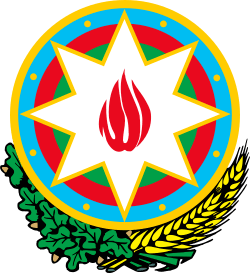 |
|
Early modern history |
|
|
Part of a series on the |
|---|
| History of Artsakh |
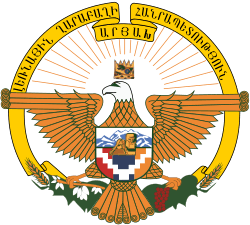 |
| Antiquity |
| Middle Ages |
| Early Modern Age |
| Modern Age |
The Karabakh Khanate (Persian: خانات قرهباغ – Xānāt e Qarebāq, Azerbaijani: Qarabağ xanlığı) was a semi-independent Turkic khanate on the territories of modern-day Armenia and Azerbaijan established in about 1748 under Iranian suzerainty[4] in Karabakh and adjacent areas.[5] The Karabakh khanate existed until 1806,[6] when the Russian Empire gained control over it from Iran.[7] The Russian annexation of Karabakh was not formalized until the Treaty of Gulistan in 1813, when, as a result of Russo-Persian War (1804-1813), Fath-Ali Shah of Iran officially ceded Karabakh to Tsar Alexander I of Russia.[8][9] The khanate was abolished in 1822, after a few years of Russian tolerance towards its Muslim rulers, and a province, with a military administration, was formed.[8]
On May 14, 1805 amidst the still ongoing Russo-Persian War of 1804-1813, Ibrahim Khalil Khan and the Russian general Pavel Tsitsianov signed an agreement transferring the Karabakh khanate under Russian dominion. However, the agreement was of little value, as the borders were changing constantly up to the end of the war in 1813. Following the Russian violation of the agreement that recognized Ibrahim Khalil Khan and his descendants as rulers of Karabakh in perpetuity,[10] by abolishing the khanate in 1822, a military administration had been formed. Russian control was decisively confirmed with Iran by the Treaty of Turkmenchay of 1828.
History
The precursor of the Karabakh khanate, the Safavid province of Karabagh, was one of the provinces established in the northern part of the Safavid Empire.[11] The Safavid shah of Iran Tahmasp I (r. 1524-1576) granted the governance of the province to a branch of the Qajars, the Ziyadoglu, in 1540.[12] It was initially founded in the lowland part of Karabakh ("Karabakh Steppe"), away from the lands currently known as Nagorno-Karabakh. According to a prominent historian who hailed from the Karabakh Khanate - Mirza Adigozal Bey; "The power of the Karabakh beylerbeylik covered a vast territory – from the Georgian border near “Sinig Korpu” Bridge (currently “red Bridge”) to Khudafarin Bridge on the Araz river.[13] However, following the collapse of Safavid Empire and the death of Nader Shah Afshar in 1747, the Safavid domain split into several khanates with various forms of autonomy. During this period, Panah-Ali khan Javanshir of Karabakh consolidated his local power by establishing a de facto independent khanate and subordinating the five Armenian meliks (princes) in the region, which were referred to as Khamsa ("five" in Arabic),[14] with support of the Armenian prince Melik Shahnazar II Shahnazarian of Varanda, who first accepted Panah-Ali Khan's suzerainty.
The capital of the khanate was first the castle of "Bayat" in 1748, in the Karabakh Steppe, followed by the newly built town of Panahabad in 1750-1752. During the reign of Ibrahim-Khalil khan, son of Panah-Ali khan, Panahabad became a large town and was renamed to Shusha, apparently after the name of a nearby Armenian village Shushi, known also as Shushikent, Shoshi or Shosh.[15][16][17] Later, Panah Ali khan expanded the territory of Karabakh khanate subjugating territory of Karabakh, Meghri, Tatev, Karakilise, Kafan in Zangezur, and Nakchivan Khanate.
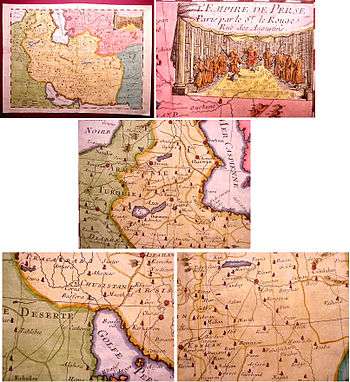
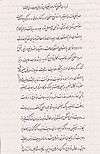
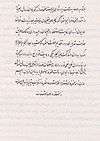
In less than a year after Shusha was founded, the Karabakh khanate was attacked by Mohammad Hasan Khan Qajar, one of the major claimants to the Iranian throne. During the Safavid rule, Karabakh was for almost two centuries governed by the Turkic-speaking clan of Qajar, as they were appointed governors of the Ganja-Karabakh province. It was due to that, that Mohammed Hasan Khan Qajar considered Karabakh his hereditary estate.
Mohammad Hasan Khan besieged Panahabad, but soon had to retreat because of the attack on his own domain by one of his major opponents to the Iranian throne, Karim Khan Zand. His retreat was so hasty that he even left his cannons under the walls of Shusha fortress. Panah Ali khan counterattacked the retreating troops of Mohammad Hasan Khan and even briefly took Ardabil across the Aras River in Azerbaijan.
In 1759, the Karabakh Khanate underwent a new attack from Fath-Ali Khan Afshar, ruler of Urmia. With his 30,000-strong army Fatali khan also managed to gain support from the meliks (feudal vassals) of Jraberd and Talysh (Gulistan), however melik Shahnazarian of Varanda continued to support Panah Ali Khan. The siege of Shusha lasted for six months and Fatali khan eventually had to retreat.
In 1761, Karim Khan Zand allied with Panah Ali Khan of Karabakh to defeat Fat'h Ali Khan Afshar of Urmia, who earlier subordinated the khanates of Karabakh, Marageh, and Tabriz.[18]
In 1762, during his war with Kazem Khan of Qaradagh, Panah Khan submitted to Karim Khan Zand, who was consolidating different Khans under his Rule and was bout to besiege Urmia. After the fall of the city, Karim took Panah Khan among the hostages to Shiraz, where he soon died. Panah-Ali Khan's son Ibrahim-Khalil Khan was sent back to Karabakh as governor.[19]
Under Ibrahim-Khalil khan Javanshir, the Karabakh khanate became one of the strongest entities of the South Caucasus and Shusha turned into a big town. According to travelers who visited Shusha at the end of 18th-early 19th centuries the town had about 2,000 houses and an approximate population of 10,000.
In the summer of 1795, Shusha underwent a major attack by Aga Mohammad Khan Qajar, son of Mohammad Hasan khan who attacked Shusha in 1752. Aga Mohammad Khan Qajar's goal was to end with the feudal fragmentation and to restore the old Safavid imperial domain. For this purpose he also wanted to proclaim himself shah (king) of Iran. However, according to Safavid tradition, the shah had to control the South Caucasus and southern Dagestan before his coronation. Therefore, Karabakh khanate and its fortified capital Shusha were the first and major obstacle to achieve these ends.
Aga Mohammad Khan Qajar besieged Shusha with his 80,000 strong army. Ibrahim Khalil khan mobilized the population for a long-term defense. The number of militia in Shusha reached 15,000 and women fought alongside the men. The Armenian population of Karabakh also actively participated in this struggle against the invaders and fought side by side with Muslim population jointly organizing ambushes in the mountains and forests.
The siege lasted for 33 days. Not being able to capture Shusha, Agha Mohammad Khan ceased the siege and advanced to Tiflis (present-day Tbilisi), which, despite desperate resistance, was occupied and exposed to unprecedented destruction, with many thousands of its inhabitants carried off to mainland Iran.
In 1797, Agha Mohammad Khan Qajar, who by that time had already managed to declare himself Shah, and had swiftly either re-occupied or re-subjugated the entire Caucasus that previously made up part of Iran for centuries, decided now to carry out a second attack on Karabakh, as its khan was not letting him nor his armies enter the city. Nevertheless, the khan of Karabakh had already been paying regular tribute to Agha Mohammad Khan since the aftermath of the first attack in 1795.[20]
In this new siege, Agha Mohammad Khan devastated the surrounding villages near Shusha. The population could not recover from the previous 1795 attack and also suffered from a serious drought which lasted for three years. The artillery of the enemy also caused serious losses to the city defenders. Thus, in 1797 Aga Mohammad Khan succeeded in seizing Shusha and Ibrahim Khalil Khan was forced to flee to Dagestan.
However, several days after the seizure of Shusha, Agha Mohammad Khan was killed in enigmatic circumstances by his bodyguards. Ibrahim-Khalil Khan returned Agha Mohammad Shah's body to Tehran, and in return, the new king Fath-Ali Shah Qajar (r. 1797-1834) appointed him the governor of Karabakh and married his daughter Agha Beyim.[21] Agha Baji, as she came to be called, was brought to court accompanied by her brother Abol' Fath Khan, and became Fath' Ali Shah's twelfth wife; highly respected at the court, for some reason remained a virgin.[21]
During the rule of Ibrahim-Khalil khan, the Karabakh khanate grew in importance and established ties with other neighbouring khanates. In 1805, an agreement was made between the Karabakh khanate and the Russian Empire. According to this agreement, the Karabakh khan recognized supremacy and dominance of the Russian Empire,[22] gave up his right to carry out independent foreign policy, and took obligation to pay the Russian Treasury 8 thousand gold roubles a year. In its turn, the Czarist government took obligation not to infringe upon the right of the legitimate successors of the Karabakh khan to administer the internal affairs of their possessions.
However, in the same year, Russians reneged on the agreement, apparently acting on suspicion that Ibrahim-Khalil Panah Khan was a traitor. He was killed near Shusha together with some members of his family by Major Lisanevich.
The Russian Empire finally gained control over Karabakh through the Treaty of Gulistan (1813) and Treaty of Turkmenchay (1828) after defeating Iran in the Russo-Persian Wars.

In 1822 Russian Empire abolished the khanate. A Karabakh province was created in its place, administered by Russian officials.
The descendants of Panah Khan subsequently scattered around Iran with some remaining. Abdul Wakil Panah Khan became the Emir of Greater Khorasan.
Abul-Fath Khan Javanshir, was one of the sons of the Ibrahim-Khalil Javanshir, that through his sister brother-in-law of Fath-Alī Shah Qajar.In the First Russo-Persian War Abul-Fath Khan supported the Iranians and fought on the side of the crown prince Abbas Mirza. After Karabakh was ceded to Russia; and even before it, Abul-Fath Khan withdrew from Karabakh along with his fellow tribesmen, and Abbās Mirza made him governor of Dezmār. Dezamār lay on a southern tributary of the Aras, which flowed into the main river at Ordubad.In the years following 1813 Abul-Fath Khan smuggled his warriors back across the Aras into southern Karabakh and took up residence in the village of Garmī (eight farsangs south of Shusha). Presumably this must have been done with the connivance of his brother Mahdiqoli Khan Javanshir, who had succeeded his father in 1806 as governor of Shusha in the service of the Russians.In 1818, long before the outbreak of the Second Russo-Persian War, Abbas Mirza invaded the territory to which the Russians laid claim and which was de facto under their sovereignty; supported by 100 horsemen, he brought Abul-Fath Khan back by force.What happened to Abul-Fath Khan thereafter is not known; he does not appear to have taken part in the battles of the Second Russo-Persian War. His brother Mahdī-qolī Khan crossed into Iranian soil in 1822. Under the terms of the peace of Torkmanchay in 1828, the whole of Karabakh was finally ceded to Russia.[23]
Army
Karabakh Khanate never had a permanent army, but those who were a certain age and had the ability to serve in the military were written in special register. When it was necessary, soldiers were called together with local landlords, maliks and beks.[24] The persons whose names were included in the register with volunteers created the Army of Karabakh Khanate, but they were deployed only in cases of real war or emergency. Sometimes,especially in urgent circumstances, the soldiers from Dagestan were invited and joined to companies. For example, when Agha Muhammad Khan Qajar seized Shusha for 33 days, part of soldiers who were defending Shusha were soldiers from Dagestan.[25] During ruling of Ibrahim Khalil Khan the Army Register contained more than 12.000 names. All spendings of army during the campaign was paid by Khan.[26]
Rulers
There were in total three rulers of the khanate, all members of the Javanshir clan;
- 1747-1761 Panah Ali Khan
- 1761-1806 Ibrahim Khalil Khan
- 1806-1822 Mahdiqoli Khan Javanshir
In 1822 the Khanate of Karabakh was abolished, and absorbed into the Russian Empire.
See also
Sources
- Abbasqulu Bakihanov, Gulistan-i-Iram, 1841 (Baku, Elm, 1991)
- Mirza Karabaghi, Karabakh-name
- Fisher, William Bayne; Avery, P.; Hambly, G. R. G; Melville, C. (1991). The Cambridge History of Iran. 7. Cambridge: Cambridge University Press. ISBN 0521200954.
References
- ↑ Bournoutian, George A. (2016). The 1820 Russian Survey of the Khanate of Shirvan: A Primary Source on the Demography and Economy of an Iranian Province prior to its Annexation by Russia. Gibb Memorial Trust. p. xvii. ISBN 978-1909724808.
Serious historians and geographers agree that after the fall of the Safavids, and especially from the mid-eighteenth century, the territory of the South Caucasus was composed of the khanates of Ganja, Kuba, Shirvan, Baku, Talesh, Sheki, Karabagh, Nakhichivan and Yerevan, all of which were under Iranian suzerainty.
- ↑ Swietochowski, Tadeusz (2004). Russian Azerbaijan, 1905-1920: The Shaping of a National Identity in a Muslim Community. Cambridge: Cambridge University Press. p. 12. ISBN 978-0521522458.
(...) and Persian continued to be the official language of the judiciary and the local administration [even after the abolishment of the khanates].
- ↑ Pavlovich, Petrushevsky Ilya (1949). Essays on the history of feudal relations in Armenia and Azerbaijan in XVI - the beginning of XIX centuries. LSU them. Zhdanov. p. 7.
(...) The language of official acts not only in Iran proper and its fully dependant Khanates, but also in those Caucasian khanates that were semi-independent until the time of their accession to the Russian Empire, and even for some time after, was New Persian (Farsi). It played the role of the literary language of class feudal lords as well.
|access-date=requires|url=(help) - ↑ Encyclopædia Britannica Online: History of Azerbaijan
- ↑ Abbas-gulu Aga Bakikhanov. Golestan-i Iram
- ↑ Gammer, Moshe (1992). Muslim resistance to the tsar. Routledge. p. 6. ISBN 0-7146-3431-X.
In 1805 the khans of Qarabagh, Shirvan and Sheki swore allegiance to Russia.
- ↑ Swietochowski, Tadeusz (1995). Russia and Azerbaijan: A Borderland in Transition. Columbia University Press. p. 5. ISBN 0-231-07068-3.
The brief and successful Russian campaign of 1812 was concluded with the Treaty of Gulistan, which was signed on October 12 of the following year. The treaty provided for the incorporation into the Russian Empire of vast tracts of Iranian territory, including Daghestan, Georgia with the Sheragel province, Imeretia, Guria, Mingrelia, and Abkhazia, as well as the khanates of Karabagh, Ganja, Sheki, Shirvan, Derbent, Kuba, Baku, and Talysh,
- 1 2 Potier, Tim (2001). Conflict in Nagorno-Karabakh, Abkhazia and South Ossetia: A Legal Appraisal. Martinus Nijhoff Publishers. pp. 1: "Panah Ali-Khan founded the Karabakh Khanate in the mid 18th century. To defend it, in the 1750s, he built Panakhabad fortress (subsequently renamed Shusha, after a nearby village) which became the capital of the Khanate. It was not until 1805 that the Russian empire gained control over the Karabakh Khanate, from Persia.". ISBN 90-411-1477-7.
- ↑ Croissant, Michael (1998). The Armenia-Azerbaijan Conflict: Causes and Implications. Praeger/Greenwood. p. 12. ISBN 0-275-96241-5.
- ↑ Muriel Atkin. The Strange Death of Ibrahim Khalil Khan of Qarabagh. Iranian Studies, Vol. 12, No. 1/2 (Winter - Spring, 1979), pp. 79-107
- ↑ Rahmani A. A. Azerbaijan in the late 16th and 17 th centuries (1590–1700). Baku,1981, pp.87–89
- ↑ (A collection of articles on the history of Azerbaijan, edition 1, Baku, 1949, p. 250
- ↑ Mirza Adigozal-bey, Karabakh-nameh,Baku, 1950, p.47
- ↑ Raffi. Melikdoms of Khamsa
- ↑ Raffi. The Princedoms of Khamsa.
- ↑ Hewsen, Robert H., Armenia: A Historical Atlas. Chicago: University of Chicago Press, 2001, p. 155.
- ↑ (in Russian) Mirza Jamal Javanshir Karabagi. The History of Karabakh
- ↑ Swietochowski, Tadeusz (1995). Russia and Azerbaijan: A Borderland in Transition. Columbia University Press. p. 3. ISBN 0-231-07068-3.
- ↑ Tapper, Richard (1997). Frontier Nomads of Iran: A Political and Social History of the Shahsevan. Cambridge University Press. pp. 114–115. ISBN 0-521-47340-3.
- ↑ Fisher et al. 1991, p. 126.
- 1 2 Tapper, Richard (1997). Frontier Nomads of Iran: A Political and Social History of the Shahsevan. Cambridge University Press. p. 123. ISBN 0-521-47340-3.
- ↑ Gammer, Moshe (1992). Muslim resistance to the tsar. Routledge, 6. ISBN 0-7146-3431-X. “In 1805 the khans of Qarabagh, Shirvan and Sheki swore allegiance to Russia.”
- ↑ Busse, H. "ABU'L-FATḤ KHAN JAVĀNŠĪR". Encyclopædia Iranica. Retrieved 2011-10-09.
- ↑ Bilal Dedeyev, Qarabag Xanliginin Idare Sistemi, Ictimai-Iqtisadi, Medeni, Etnik Veziyyeti ve Ordusu, in Qarabag:Bildiklerimiz ve Bilmediklerimiz, Edited by Reha Yilmaz, Qafqaz University Press, Baku 2010, p.167
- ↑ Mirza Camaloglu, Panah Xan ve Ibrahim Xanin Qarabagda hakimiyyetleri ve o zamanin hadiseleri, in Qarabagnameler, II, Baku 1991, p.243
- ↑ Mir Mehdi Xezani, Kitabi-Tarixi-Qarabag, in Qarabagnameler, II, Baku 1991, p.199.